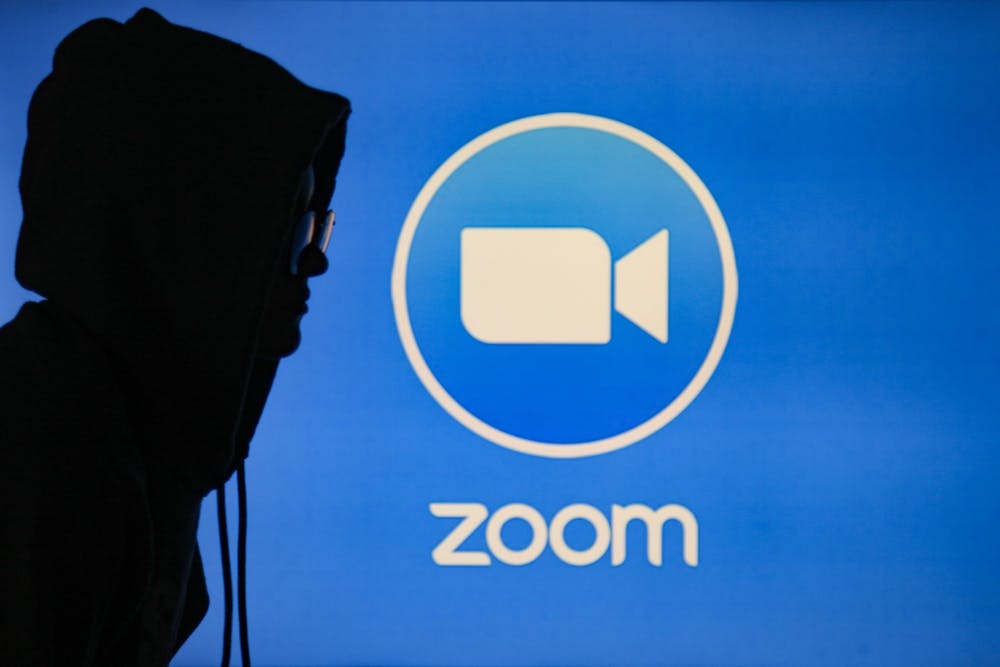Participants reported that the invader repeatedly used the n-word along with calls for lynching. In addition, they said the attacker called on various female call participants by name and urged them to expose themselves.
“It was an attack, and it felt like an assault,” Strong said.
Several participants, including Crawford and Northern Orange NAACP assistant secretary and co-chairperson of the voting committee Emily Elstad, said the attacker’s voice sounded like that of a child.
Elstad emphasized how quick the attack was. She said she estimated the entire Zoombombing happened over the course of about 60 to 90 seconds before organizers ended the meeting. She said within around 30 seconds, the perpetrator sent approximately 85 chat messages.
Strong expressed that the hardest part of the Zoombombing was being forced to end the meeting early.
“Here we had firsthand accounts of people who had really stepped out courageously to tell their story and this happens,” she said.
Robbyn Davis-Ellison, a member of the Northern Orange NAACP, questioned why the perpetrator wanted to silence this conversation.
“It’s kind of interesting that we were talking about police and policing, and who didn’t want that conversation to be had?” she said.
Crawford said the Zoombombing didn’t surprise him.
“That's what people do when they seek to shut down your voice,” he said.
He said people commented offensive messages on the Northern Orange NAACP’s Facebook in anticipation of the town hall.
“In most cases, we understand that there's always that element of society that when you talk about Black Lives Matter, that somehow becomes offensive,” he said.
To get the day's news and headlines in your inbox each morning, sign up for our email newsletters.
The impact
Davis-Ellison said the town hall triggered memories of another time she was racially harassed. She said when she was in college, a group of white males screamed at her and some friends, called them the n-word and told them to “go back to the jungle.” After the Zoom call, she said she had trouble sleeping.
“You don’t get better,” she said. “You just store it because you have to.”
Elstad said she didn’t sleep for two nights after the call.
“I’m a white woman, so I can’t even begin to imagine how disturbing that would have been for people of color on the call,” she said.
Particularly for older participants, the references to lynchings provoked institutional memories, Crawford said.
Strong recounted hearing monkey sounds in her head after the conference.
“As a Black person, I’m less than human is what that signaled,” she said. “I certainly don’t believe those things, but when something like this happens it does create this stress that you don’t need.”
Elstad said the offender intended to provoke these emotional reactions.
“They were trying to scare us and shake us up and discourage us from doing the work that we’re doing,” she said. “And so I think it’s really important to say that even though we were really shaken up by it, because how could you not be, we are not deterred in our work.”
Next steps
A Zoom spokesperson said in an email that the company condemns behavior like that of the town hall. According to Zoom’s statement, the company has recently updated and added security features, including controlling screen sharing, removing and reporting participants and locking meetings.
“We have also been educating users on security best practices for setting up their meetings, including recommending that users avoid sharing private meeting links and passwords publicly on websites, social media or other public forums, and encouraging anyone hosting large-scale or public events to utilize Zoom’s webinar solution,” the statement said.
Crawford explained that the Northern Orange NAACP didn’t use Zoom’s registration protocols because organization members wanted it to be an open forum. He said because of this incident, future chapter teleconferences will require pre-registration and vetting.
Zoom’s statement added that the company encourages users to report these kinds of offenses to law enforcement authorities.
Alicia Stemper, director of public information at the Orange County Sheriff’s Office, said the sheriff’s office is currently investigating the town hall Zoombombing. She said these kinds of investigations can be tedious and often involve working with IP addresses and pursuing search warrants to follow the electronic trail.
“It can be discouraging for the people who were victimized by this, but it takes a while,” she said.
“Here we had firsthand accounts of people who had really stepped out courageously to tell their story and this happens.”
LaTarndra Strong, vice president of the Northern Orange NAACP
As of now, it appears that the crime falls into the category of a harassment or communicating threats charge, but it is also possible that it will be charged as a cybercrime, Stemper said.
“We have been finding Zoom very quick, easy, responsive to work with as we tried to get the search warrants,” she said.
Strong explained that many individuals defend these types of crimes on the basis of free speech.
“We are at the mercy of a system that hasn’t done a good job of protecting people of color from racial terror and racial harassment,” she said. “Not much has changed since the early 60s in terms of making this kind of behavior illegal.”
North Carolina state law classifies offenses based on a victim's race, color, religion, nationality or country of origin as misdemeanors. North Carolina state officials are not required to track hate crimes.
According to the Federal Bureau of Investigation’s Uniform Crime Reporting program, there were 142 hate crimes in North Carolina in 2018, 83 of which were motivated by race, ethnicity or ancestry.
“If we don’t have the right statutes on the books, then we’re going to see this happening over and over again,” Strong said.
@slesnewski
city@dailytarheel.com | @DTHCityState



